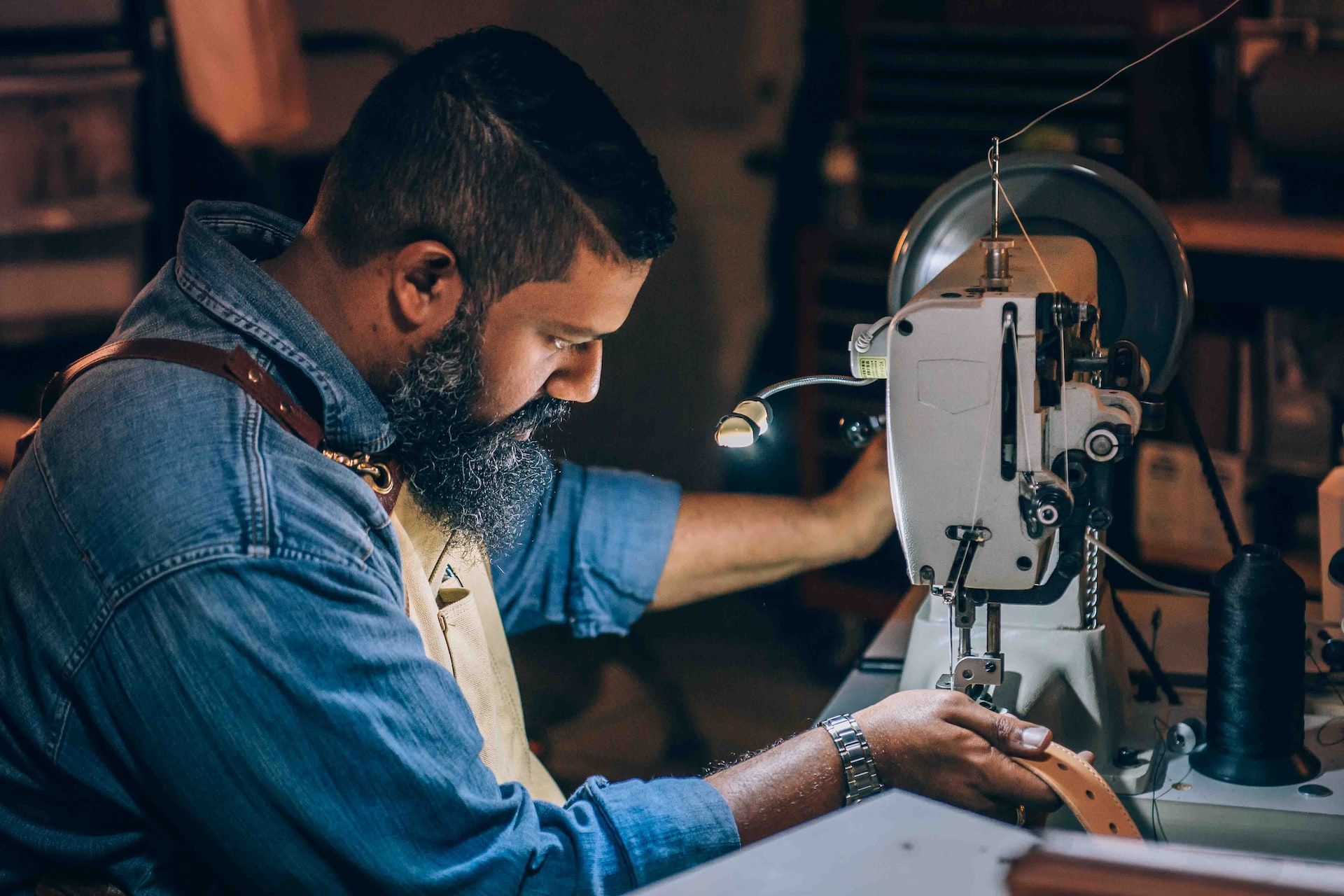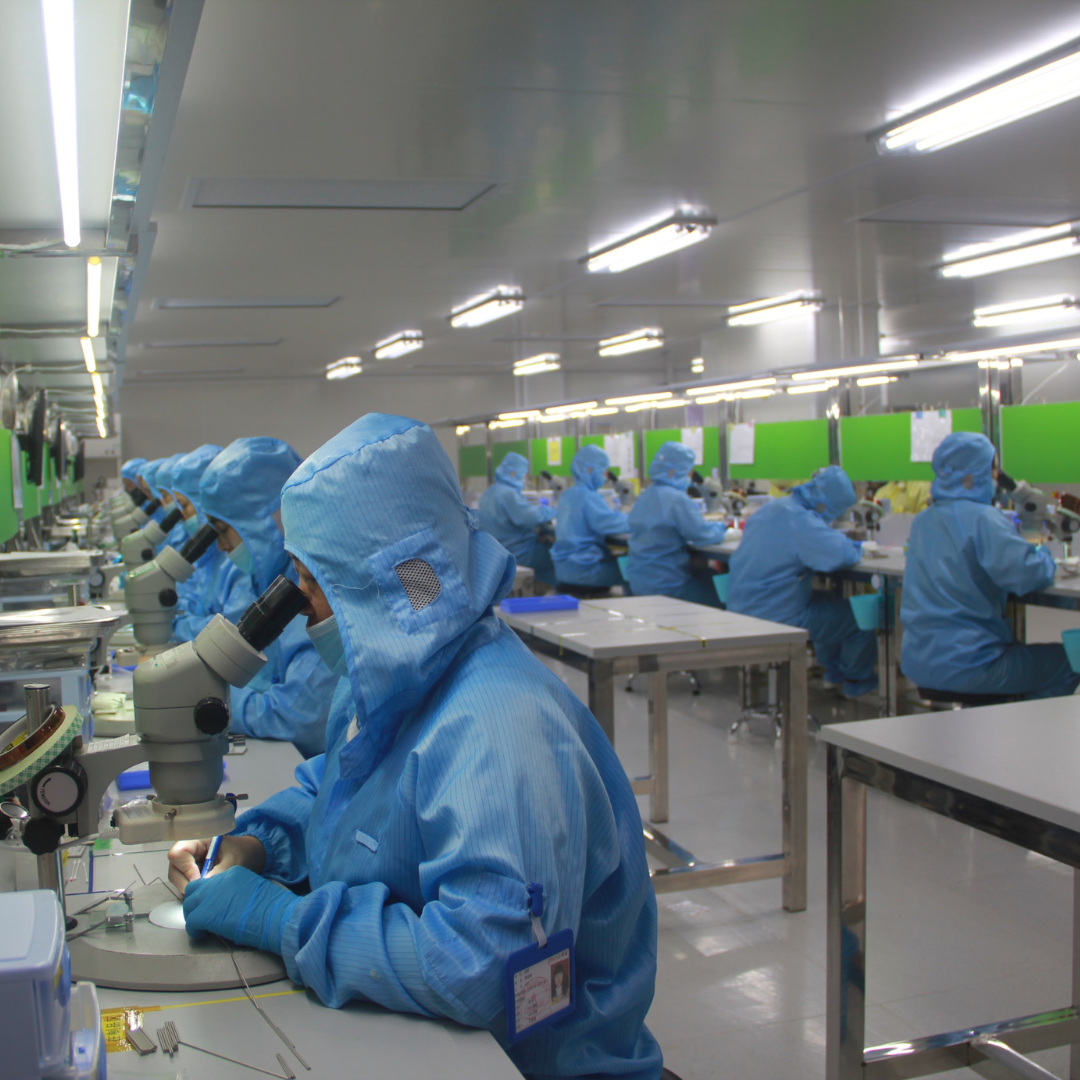Leather manufacturing is a centuries-old practice that involves the transformation of animal hides into a wide range of products. It includes clothing, footwear, furniture, and automotive interiors.
While leather products are prized for their durability, high-quality appearance, and versatility, there are also several disadvantages associated with leather manufacturing. These include concerns about animal welfare, the use of chemicals in leather processing, and the environmental impact of leather production.
In this article, we will explore the advantages and disadvantages of leather manufacturing, as well as the significance of leather products in various industries. By understanding the benefits and drawbacks of leather manufacturing, consumers can make informed choices about the products they purchase and use.
Let's take a look at the table of content below:
- About Leather Manufacturing
- Significance of Leather Manufacturing in Various Industries
- Advantages of Leather Manufacturing
- Disadvantages of Leather Manufacturing
- Wrapping Up
- How Deskera Can Assist You?
Let's get started!
About Leather Manufacturing
Leather manufacturing is the process of transforming animal hides or skins into leather, a durable material that is commonly used in various industries such as fashion, automotive, furniture, and more.
The process involves several steps, including tanning, dyeing, and finishing, to create a high-quality product that is resistant to wear and tear, flexible, and breathable.
Leather manufacturing has been around for centuries and remains an important industry today, although it has faced criticism for its environmental impact and animal welfare concerns.
Significance of Leather Manufacturing in Various Industries
Leather manufacturing is a significant industry in various sectors such as fashion, automotive, furniture, and more. Following, we’ve discussed some crucial details on its significance in each of these industries:
Fashion:
Leather has been a staple material in fashion for centuries, and it continues to be a popular choice for apparel, shoes, and accessories. Leather offers a luxurious feel and a high-quality appearance that is unmatched by other materials.

Furthermore, it is also highly versatile, with various textures, finishes, and colors available to suit different fashion styles. From leather jackets to bags, shoes, and belts, leather is a preferred material for many fashion enthusiasts and designers.
Automotive:
Leather is also used extensively in the automotive industry, particularly in the manufacturing of car interiors. Leather seats, steering wheels, and gear shifts provide a luxurious feel and appearance to cars and are a popular choice for high-end vehicles.
Leather is also durable and resistant to wear and tear, making it ideal for car interiors that experience a lot of use.
Furniture:
Leather is a popular material in the furniture industry, and it is commonly used in the manufacturing of sofas, chairs, and other pieces of furniture. Leather furniture is known for its durability and longevity, making it a preferred choice for households with children or pets.
Moreover, leather furniture is also available in various finishes and colors, making it easy to match with different interior design styles.
Sports:
Leather is also used in the manufacturing of sports equipment such as baseball gloves, soccer balls, and boxing gloves. Leather sports equipment is preferred for its durability, flexibility, and breathability, which help athletes perform at their best.
Aviation:
Leather is commonly used in the aviation industry for manufacturing airplane interiors, particularly in first-class and business-class cabins. Furthermore, leather seats, upholstery, and headrests provide a luxurious feel and appearance to passengers and help airlines differentiate their offerings from competitors.
Equestrian:
Leather is the primary material used in the manufacturing of horse saddles, reins, and bridles. Leather provides comfort and durability to both the horse and rider, making it a preferred choice for equestrian enthusiasts.
Medical:
Leather is used in the manufacturing of medical equipment such as surgical gloves, orthopedic shoes, and prosthetics. Leather is a natural material that is breathable and flexible, making it ideal for medical applications that require comfort and durability.
Military and law enforcement:
Leather is used in the manufacturing of military and law enforcement equipment such as boots, belts, and holsters. Leather provides durability and resistance to wear and tear, making it an ideal material for these applications.

Consequently, leather manufacturing plays a significant role in various industries due to its versatility, durability, and luxurious appearance. It is used extensively in fashion, automotive, furniture, sports, and other sectors, and is expected to continue being an essential material in these industries in the future.
Advantages of Leather Manufacturing
Following, we've discussed some crucial advantages of leather manufacturing. Let's discuss them in detail:
Durability and Longevity of Leather Products
One of the significant advantages of leather manufacturing is the durability and longevity of leather products. Leather is a natural material that is known for its strength and resistance to wear and tear. Leather products, such as bags, shoes, jackets, and furniture, can last for years and even decades with proper care and maintenance.
Leather is more durable than many synthetic materials used in the manufacturing of products. Unlike synthetic materials that wear out or tear over time, leather develops a patina over time. It further enhances its appearance and makes it more resistant to damage. Leather also has a high tensile strength, which means it can withstand heavy weights and stress without tearing or breaking.
In addition to its durability, leather is also resistant to water, fire, and heat, making it a preferred choice for products that require protection from the elements. Leather products also tend to age well, becoming softer and more comfortable over time.
Overall, the durability and longevity of leather products make them an excellent investment for consumers who value quality and longevity. While leather products may be more expensive than synthetic alternatives, they often provide better value in the long run due to their durability and longevity.
High-Quality Appearance and Luxurious Feel of Leather
Another significant advantage of leather manufacturing is the high-quality appearance and luxurious feel of leather products. Leather is a natural material that has a unique texture, grain, and color, giving it an unmistakable look and feel that is difficult to replicate with synthetic materials.
Furthermore, leather is often associated with luxury and sophistication, and it adds a touch of elegance to any product it is used in. Whether it is a leather jacket, shoes, bag, or furniture, leather has a timeless appeal that transcends fashion trends and styles.
Leather is also highly versatile, with various textures, finishes, and colors available to suit different needs and preferences. From the smooth, polished look of patent leather to the rugged, distressed appearance of distressed leather, there is a leather type for every taste and style.
Moreover, leather products are often handcrafted by skilled artisans, which further adds to their high-quality appearance and luxurious feel. The attention to detail and craftsmanship that goes into making leather products make them unique and valuable.
In summary, the high-quality appearance and luxurious feel of leather products make them highly desirable and sought after by consumers who value quality and style.
Moreover, leather's unique texture, grain, and color give it a distinctive look and feel that is difficult to replicate with synthetic materials, making it an excellent investment for those who want to add a touch of luxury and sophistication to their wardrobe or home décor.
Resistance to Wear and Tear, and Ability to Withstand Harsh Environment
Another advantage of leather manufacturing is the resistance to wear and tear, and the ability to withstand harsh environments. Leather is a durable material that can withstand heavy use, making it an ideal choice for products that are subjected to daily wear and tear.
Leather products such as shoes, bags, and jackets are designed to last for years and are resistant to scratches, punctures, and other forms of damage. Leather is also resistant to fading and discoloration, which means that leather products retain their original appearance for longer.
In addition, leather is also a material that can withstand harsh environments. For example, leather is often used in the manufacturing of work boots and outdoor gear, as it can withstand exposure to mud, water, and other environmental hazards. It is also resistant to fire and heat, making it a preferred choice for products that require protection from extreme temperatures.
Furthermore, leather is a natural material that is breathable and can adapt to different environments. Leather products are comfortable to wear and can regulate temperature and moisture, making them ideal for use in different weather conditions.
Eventually, the resistance to wear and tear, and the ability to withstand harsh environments are significant advantages of leather manufacturing. Leather products are durable and resistant to damage, making them an excellent investment for consumers who require products that can withstand heavy use.
Moreover, leather is also adaptable to different environments and can regulate temperature and moisture, making it a preferred choice for products that require protection from extreme temperatures or different weather conditions.
Breathable and Flexible Nature of Leather
Another advantage of leather manufacturing is the breathable and flexible nature of leather. Leather is a natural material that can adjust to the body's temperature, making it comfortable to wear for extended periods. Leather is also flexible, which means that it can conform to the body's shape, providing a comfortable fit.
Leather is also breathable, allowing air to pass through it, which prevents the accumulation of sweat and odors. This makes leather products ideal for use in hot and humid environments. The breathability of leather also helps to regulate temperature, keeping the body cool in warm weather and warm in cold weather.
Moreover, leather is also a flexible material that can be molded into different shapes and forms. This makes it ideal for use in the manufacturing of products such as shoes, bags, and jackets, where the material needs to conform to the body's shape for a comfortable fit.
Consequently, the breathable and flexible nature of leather is a significant advantage of leather manufacturing. Leather products are comfortable to wear for extended periods due to their ability to adjust to the body's temperature and conform to its shape.
The breathability of leather also helps to regulate temperature and prevent the accumulation of sweat and odors, making it ideal for use in hot and humid environments. The flexibility of leather allows it to be molded into different shapes and forms, making it ideal for use in the manufacturing of products such as shoes, bags, and jackets.
Versatility in Application
Another advantage of leather manufacturing is the versatility in application across industries such as fashion, automotive, and furniture. Leather is a material that can be used in various industries, making it a valuable and versatile commodity.
In the fashion industry, leather is used in the manufacturing of products such as shoes, bags, belts, and jackets. Leather's unique texture, grain, and color give it a distinctive look and feel that is difficult to replicate with synthetic materials. The durability and flexibility of leather also make it ideal for use in fashion products that are subjected to heavy use.
When it comes to automotive industry, leather is used in the manufacturing of car interiors, such as seats, steering wheels, and dashboards. Leather's resistance to wear and tear and ability to withstand harsh environments make it a preferred choice for car manufacturers. The luxurious feel and appearance of leather also add to the overall value and aesthetic of the car.
If we discuss about the furniture industry, leather is used in the manufacturing of products. It includes sofas, chairs, and ottomans. Leather's durability, flexibility, and luxurious appearance make it an ideal material for use in furniture products. Leather furniture is also comfortable to sit on and can regulate temperature and moisture, making it a preferred choice for many homeowners.
Leather is also used in the manufacturing of sports equipment such as baseball gloves, footballs, and boxing gloves. The durability and flexibility of leather make it an ideal material for use in sports equipment that is subjected to heavy use.
Consequently, the versatility in application across industries such as fashion, automotive, and furniture is a significant advantage of leather manufacturing. Leather is a valuable and versatile commodity that can be used in various industries due to its unique texture, grain, and color, as well as its durability, flexibility, and luxurious appearance. The resistance to wear and tear and ability to withstand harsh environments make leather a preferred choice for manufacturers in different industries.
Biodegradable and Recyclable Nature of Leather
Another advantage of leather manufacturing is the biodegradable and recyclable nature of leather. Leather is a natural material that is biodegradable, which means it can break down naturally over time. This makes leather products an environmentally friendly option compared to synthetic materials, which can take hundreds of years to decompose.
In addition, leather is also a recyclable material. When leather products are no longer usable, they can be recycled and repurposed into new products. This reduces waste and promotes sustainable practices, making leather an eco-friendly option.
Furthermore, leather tanning has evolved in recent years to become more environmentally friendly. Many tanneries have adopted eco-friendly practices such as using natural dyes and reducing water consumption. This has resulted in the production of leather that is more sustainable and environmentally friendly.
Eventually, the biodegradable and recyclable nature of leather is a significant advantage of leather manufacturing. Leather products are an environmentally friendly option compared to synthetic materials, as leather can break down naturally over time and is recyclable. The adoption of eco-friendly practices in leather tanning has also resulted in the production of leather that is more sustainable and environmentally friendly.
Disadvantages of Leather Manufacturing
Following, we've discussed some drawbacks of leather manufacturing. Let's learn:
Environmental Impact of Leather Manufacturing
One of the main disadvantages of leather manufacturing is its environmental impact. Leather manufacturing can have negative effects on the environment due to the processes involved in tanning the leather.
The tanning process requires the use of chemicals, such as chromium and formaldehyde, which can be harmful to the environment and human health. The use of these chemicals can result in the release of toxic waste and wastewater into the environment, which can pollute the air, soil, and water.
Furthermore, the leather industry is also a major contributor to deforestation. The demand for leather results in the clearing of forests to make way for livestock grazing and farming. This has significant impacts on the environment, such as soil erosion, loss of biodiversity, and increased greenhouse gas emissions.
Additionally, the transportation of leather products can also have negative environmental impacts due to the emissions produced by transportation vehicles.
Eventually, the environmental impact of leather manufacturing is a significant disadvantage. The tanning process requires the use of chemicals that can be harmful to the environment and human health, and the leather industry is a major contributor to deforestation.
The transportation of leather products can also contribute to greenhouse gas emissions. However, it is worth noting that the leather industry has made efforts to adopt eco-friendly practices in recent years to reduce its environmental impact.
Use of Chemicals in Leather Processing
Another disadvantage of leather manufacturing is the use of chemicals in leather processing. The tanning process involves the use of chemicals to preserve the leather, which can be harmful to both the environment and human health.
Some of the chemicals used in leather processing, such as chromium and formaldehyde, are toxic and can have negative effects on the environment and human health. These chemicals can cause skin irritation, respiratory problems, and can even be carcinogenic.
Furthermore, the disposal of hazardous chemical waste and wastewater generated during the tanning process can also have negative environmental impacts. If not properly treated, these chemicals can contaminate water sources and soil, leading to pollution and harm to wildlife and human health.
However, it is important to note that the leather industry has made significant efforts to reduce the use of harmful chemicals in the tanning process. Many tanneries have implemented eco-friendly practices, such as using natural dyes and reducing water consumption, to minimize the use of chemicals and reduce their impact on the environment.
In summary, the use of chemicals in leather processing is a significant disadvantage of leather manufacturing. These chemicals can be harmful to the environment and human health, and their disposal can lead to pollution. However, the leather industry has made significant strides to reduce the use of harmful chemicals in recent years.
Animal Welfare Concerns in the Leather Industry
Animal welfare is a significant concern in the leather industry. Leather is derived from animal hides, and the sourcing of these hides can raise ethical concerns regarding the treatment of animals.
Some animal welfare issues in the leather industry include the use of animals for meat and hides, inhumane treatment during the raising and transport of animals, and the use of practices such as mulesing (a surgical procedure to remove skin around the tail of a sheep) and live-plucking (the removal of feathers from live birds).
In some countries, there are limited regulations on the treatment of animals in the leather industry, which can lead to unethical and inhumane practices. This can result in animal suffering, which can be a significant ethical concern for consumers and animal rights activists.
However, it is worth noting that there are ethical and sustainable alternatives to traditional leather that address animal welfare concerns. For example, vegan leather, also known as faux leather, is a synthetic alternative to leather that is made from materials such as polyurethane and does not involve the use of animal products.
Additionally, there are also sustainable alternatives to traditional leather that use animal hides that are a byproduct of the meat industry. These alternatives promote the ethical treatment of animals and reduce waste in the meat industry.
In summary, animal welfare concerns are a significant issue in the leather industry. The sourcing of animal hides can raise ethical concerns regarding the treatment of animals, and the industry has been criticized for inhumane practices.
However, there are ethical and sustainable leather alternatives to traditional leather that address animal welfare concerns, such as vegan leather and sustainable alternatives that use animal hides as a byproduct of the meat industry.
High Cost of Leather Products
Another disadvantage of leather manufacturing is the high cost of leather products. Compared to synthetic materials, leather is often more expensive to produce, which can result in higher prices for consumers.
Furthermore, the high cost of leather is due to several factors, such as the cost of sourcing animal hides, the labor-intensive process of tanning and processing leather, and the high demand for quality leather products.
In addition, the cost of leather can also be affected by fluctuations in the global economy, as well as the supply and demand for leather products. For example, if the demand for leather products increases, the price of leather may also increase due to limited supply.
However, despite the high cost of leather products, many consumers are willing to pay for the quality, durability, and luxurious feel of leather. Leather products are often considered a luxury item and are associated with high-end fashion and luxury brands.
In summary, the high cost of leather products is a significant disadvantage of leather manufacturing. The cost of sourcing animal hides, labor-intensive tanning processes, and high demand for quality leather products contribute to the high cost of leather. However, despite the cost, many consumers are willing to pay for the quality and luxurious feel of leather.
Maintenance Requirements for Leather Products
Another disadvantage of leather products is the maintenance and care required to keep them looking their best. Leather is a natural material that requires regular cleaning and conditioning to maintain its appearance, durability, and longevity.
If not properly cared for, leather products can become dry, cracked, and discolored, which can significantly reduce their lifespan. Furthermore, exposure to sunlight, heat, and moisture can also damage leather and cause it to fade, shrink, or become brittle.
Furthermore, to properly care for leather products, it is recommended to clean them regularly with a soft cloth or brush to remove dust and dirt. Leather should also be conditioned regularly with a leather conditioner to prevent it from drying out and cracking.
It is also important to avoid exposing leather products to direct sunlight or heat sources, as well as keeping them away from moisture and dampness. In addition, it is recommended to store leather products in a cool, dry place when not in use to prevent damage.
While proper care and maintenance can help extend the life of leather products, it is important to note that regular cleaning and conditioning can be time-consuming and may require additional expenses for specialized leather care products.
In summary, the maintenance requirements for leather products are a disadvantage of leather manufacturing. Leather requires regular cleaning and conditioning to maintain its appearance, durability, and longevity, and exposure to sunlight, heat, and moisture can damage leather. Proper care and maintenance can be time-consuming and may require additional expenses for specialized leather care products.
Limitations in Design and Customization Options for Leather Products
Another limitation of leather manufacturing is the lack of design and customization options available for leather products. Unlike synthetic materials, leather is a natural material that has limitations when it comes to design and customization.
For example, leather has natural imperfections and markings that cannot be removed, and the size and shape of animal hides can also limit the size and design of leather products. Additionally, the dyeing and finishing processes used in leather manufacturing can also limit the range of colors and finishes available for leather products.
Furthermore, the labor-intensive process of tanning and processing leather can also limit the speed and flexibility of production, making it difficult for manufacturers to keep up with changing trends and styles.
While there are some options for customization in leather products, such as embossing or engraving, the range of design options is limited compared to synthetic materials, which can be molded and shaped in a wide range of designs and colors.
In summary, the limitations in design and customization options for leather products are a disadvantage of leather manufacturing. The natural imperfections and markings of leather, limitations in size and shape, and the dyeing and finishing processes used in leather manufacturing can limit the range of design and customization options available.
While there are some options for customization, the range of design options is limited compared to synthetic materials.
Wrapping Up
In conclusion, leather manufacturing has both advantages and disadvantages. The advantages include the durability and longevity of leather products, the high-quality appearance and luxurious feel of leather.
Along with the resistance to wear and tear and ability to withstand harsh environments, the breathable and flexible nature of leather, the versatility in application across various industries, and the biodegradable and recyclable nature of leather.
However, there are also several disadvantages of leather manufacturing. These include the environmental impact of leather production, the use of chemicals in leather processing, animal welfare concerns, the high cost of leather products, and the maintenance requirements for leather products. In addition, the limitations in design and customization options for leather products can also be a disadvantage.
Overall, it is important for consumers to weigh the advantages and disadvantages of leather products and consider their individual needs and values when making purchasing decisions.
While leather has its benefits, there are also alternative materials that may be more suitable for certain applications. By understanding the pros and cons of leather manufacturing, consumers can make informed choices that align with their personal values and preferences.
How Deskera Can Assist You?
Deskera's integrated financial planning tools allow investors to better plan their investments and track their progress. It can help investors make decisions faster and more accurately.
Deskera Books enables you to manage your accounts and finances more effectively. Maintain sound accounting practices by automating accounting operations such as billing, invoicing, and payment processing.

Deskera CRM is a strong solution that manages your sales and assists you in closing agreements quickly. It not only allows you to do critical duties such as lead generation via email, but it also provides you with a comprehensive view of your sales funnel.
Deskera People is a simple tool for taking control of your human resource management functions. The technology not only speeds up payroll processing but also allows you to manage all other activities such as overtime, benefits, bonuses, training programs, and much more. This is your chance to grow your business, increase earnings, and improve the efficiency of the entire production process.
Final Takeaways
We've arrived at the last section of this guide. Let's have a look at some of the most important points to remember:
- Leather is more durable than many synthetic materials used in the manufacturing of products. Unlike synthetic materials that wear out or tear over time, leather develops a patina over time, which enhances its appearance and makes it more resistant to damage.
- Leather is also highly versatile, with various textures, finishes, and colors available to suit different needs and preferences. From the smooth, polished look of patent leather to the rugged, distressed appearance of distressed leather, there is a leather type for every taste and style.
- Leather is also breathable, allowing air to pass through it, which prevents the accumulation of sweat and odors. This makes leather products ideal for use in hot and humid environments. The breathability of leather also helps to regulate temperature, keeping the body cool in warm weather and warm in cold weather.
- Leather is also a recyclable material. When leather products are no longer usable, they can be recycled and repurposed into new products. This reduces waste and promotes sustainable practices, making leather an eco-friendly option.
- The environmental impact of leather manufacturing is a significant disadvantage. The tanning process requires the use of chemicals that can be harmful to the environment and human health, and the leather industry is a major contributor to deforestation. The transportation of leather products can also contribute to greenhouse gas emissions.
- It is important to note that the leather industry has made significant efforts to reduce the use of harmful chemicals in the tanning process. Many tanneries have implemented eco-friendly practices, such as using natural dyes and reducing water consumption, to minimize the use of chemicals and reduce their impact on the environment.
- In some countries, there are limited regulations on the treatment of animals in the leather industry, which can lead to unethical and inhumane practices. This can result in animal suffering, which can be a significant ethical concern for consumers and animal rights activists.
Related Articles













